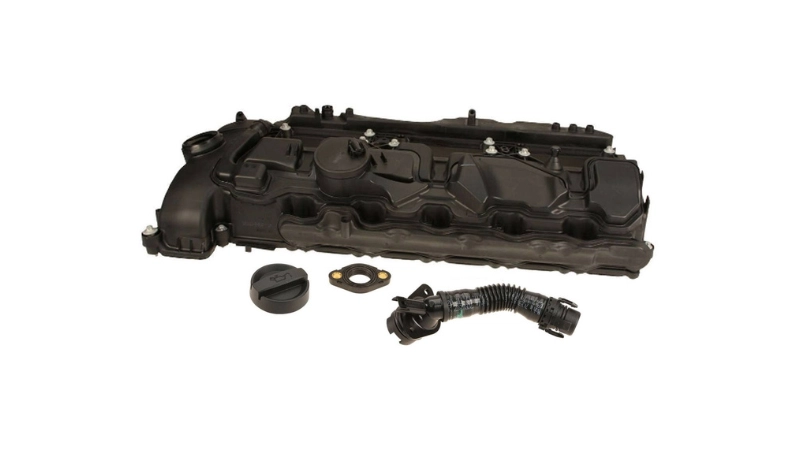The BMW N55 engine is a favorite among car enthusiasts and daily drivers alike, thanks to its impressive blend of power, efficiency, and reliability. Whether you’re cruising in a 3 Series or tearing up the road in an X5, the N55 delivers a driving experience that’s hard to beat. But, like any engine, it has its own set of weaknesses. One of the more common issues that N55 owners might encounter is with the valve cover.
The valve cover might not seem like a big deal, but it plays a crucial role in keeping your engine running smoothly. It seals the top of the engine, keeps the oil where it should be, and even houses some important components like the ignition coils, Valvetronic seal, and the Positive Crankcase Ventilation (PCV) system. Over time, though, the valve cover and its gasket can start to wear out, leading to leaks and other problems that could affect your engine’s performance.
In this guide, we’re breaking down everything you need to know about the N55 valve cover issue. We’ll walk you through the common symptoms to watch out for, dig into what causes these problems, and give you a step-by-step guide on replacing the valve cover yourself. Plus, we’ll throw in some handy tips on keeping your N55 in top shape so you can avoid running into this issue again.

Symptoms of a BMW N55 Valve Cover Leak
A leaking valve cover gasket on your BMW N55 engine can lead to a host of issues that, if left unchecked, could result in more serious problems. Recognizing the symptoms early can save you from costly repairs down the road. Here, we’ll break down the most common signs that your N55 valve cover might be leaking and what they mean for your engine’s health.
Oil Leaks
One of the most obvious signs of a valve cover leak is oil seeping out around the area. You might notice oil pooling around the spark plug wells, on the engine block, or even dripping onto the ground beneath your vehicle. These leaks often start small but can worsen over time, potentially leading to low oil levels and engine damage if not addressed. Catching an oil leak early is crucial to prevent further complications.
Burning Oil Smell
If you notice a strong, acrid, burning oil smell, especially when driving at high RPMs, it’s likely due to oil leaking from the valve cover and coming into contact with hot engine parts. This is not just unpleasant; it is also a cause for concern as it may become a safety hazard.
A burning oil smell indicates that your valve cover gasket has failed and needs immediate attention. Ignoring this sign can lead to more severe engine issues, as the burning oil can damage other components and create hazardous driving conditions.
Misfires and Rough Idling
A cracked valve cover or defective Positive Crankcase Ventilation (PCV) can lead to vacuum leaks, which are notorious for causing engine misfires and rough idling. When the valve cover fails, air can enter the engine where it shouldn’t, disrupting the air-fuel mixture and causing the engine to misfire.
This affects your car’s performance and can lead to further engine damage if not addressed promptly. If your N55 is misfiring or idling roughly, it’s important to check the PCV valve integrated into the valve cover.
Check Engine Light
The Check Engine Light (CEL) is often triggered when there’s an issue with engine operation, and a malfunctioning valve cover is no exception. The valve cover plays a vital role in maintaining the integrity of the engine’s lubrication and air intake system, and any leaks or damage can disrupt the engine’s performance.
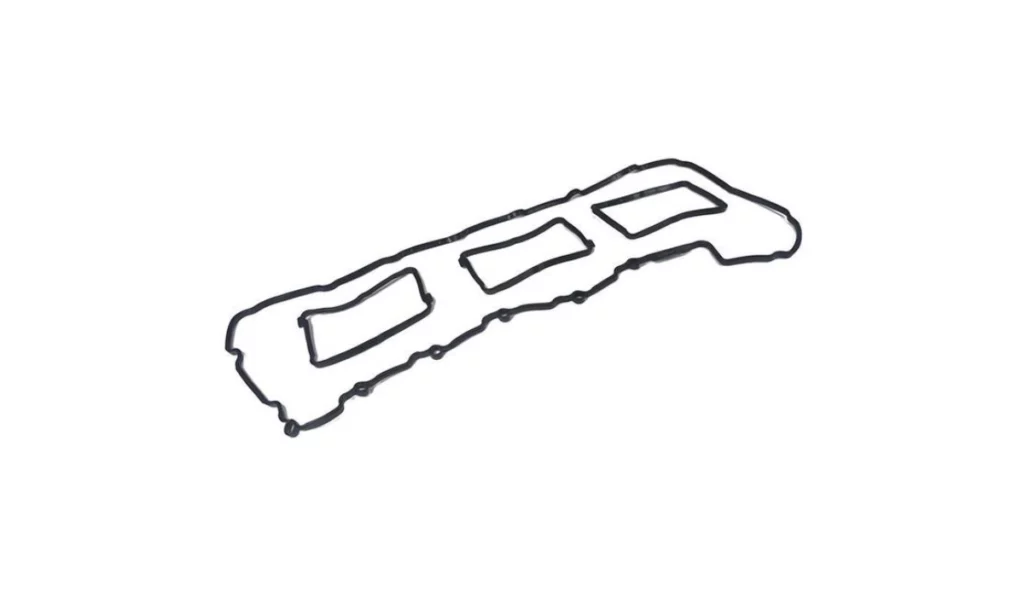
This can lead to the CEL being illuminated, alerting you to a potential problem. If your CEL comes on, especially in conjunction with other symptoms like oil leaks or misfires, it’s crucial to inspect the valve cover as part of your troubleshooting process. Ignoring the CEL can lead to more significant engine problems, so it’s essential to address the underlying issue promptly.
Is it OK to Drive with a Leaking Valve Cover Gasket?
No, driving with a leaking valve cover gasket is not advisable. While it might seem like a minor issue at first, driving with a leak can lead to oil loss, which can eventually cause serious engine damage. Additionally, oil leaking onto hot engine parts can increase the risk of fire. It’s important to address a leaking valve cover gasket as soon as possible to avoid more costly repairs and ensure your vehicle remains safe to drive.
Genuine BMW Parts at Competitive Prices
At Bimmers.com, browse a comprehensive selection of genuine BMW and OEM parts with fantastic online prices. We aim to support every BMW owner with high-quality auto parts at lower costs. Our range meets OEM quality standards and is tailored to your BMW’s needs. From critical brake components to routine maintenance supplies, we’ve got everything you need.
Choosing Bimmers.com means substantial savings without compromising quality, ideal for BMW DIY fans seeking cost-effectiveness and top-notch parts. With our extensive inventory, easy-to-use platform, and exceptional customer service, you’ll always find what you need. For all maintenance and upgrades, trust Bimmers.com.
Causes of N55 Valve Cover Issues
Understanding the root causes of a valve cover oil leak in your BMW N55 engine is crucial for prevention and effective repair. Several factors can contribute to these leaks, ranging from normal wear and tear to specific mechanical issues. In this section, we’ll explore the most common causes of valve cover leaks, helping you better understand why this problem occurs and how to address it.
Wear and Tear
Over time, normal wear and tear can significantly impact both the valve cover and its gasket, leading to oil leaks. The valve cover gasket, responsible for creating a tight seal between the valve cover and the cylinder head, can degrade as the vehicle ages.
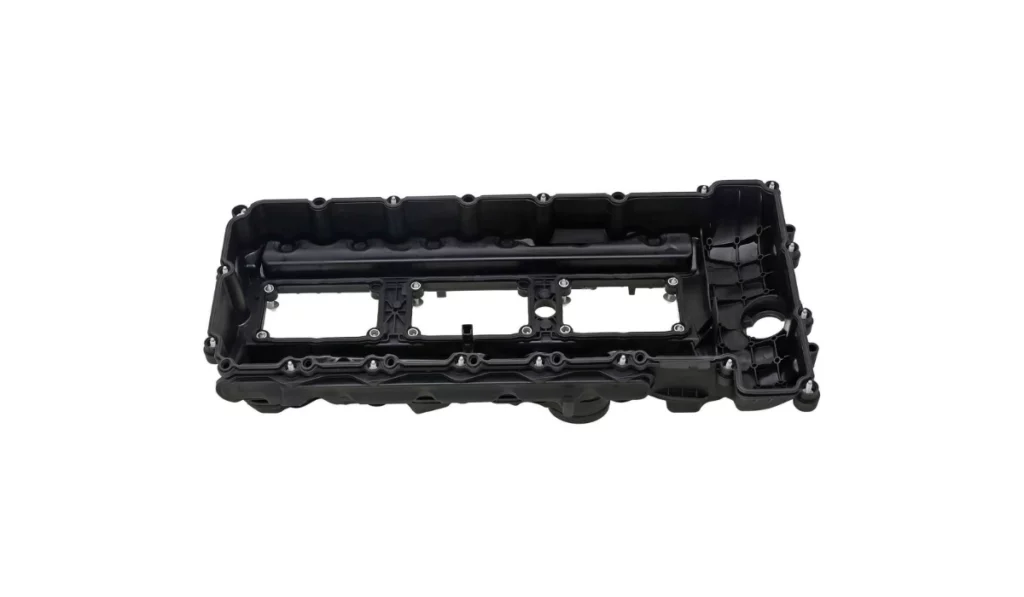
This degradation often results in the gasket becoming hard and losing its flexibility, which diminishes its ability to maintain a proper seal. As a result, oil can start to seep through the compromised gasket, leading to leaks around the valve cover area.
The plastic valve cover is also susceptible to wear and tear. With prolonged exposure to the heat and stress of the engine bay, the valve cover can become brittle and may warp. This warping can distort the shape of the valve cover, preventing it from sealing correctly against the engine. In some cases, the brittleness can even cause the valve cover to crack, which leads to more pronounced oil leaks.
Heat Cycles
The N55 engine, like all internal combustion engines, undergoes repeated heating and cooling cycles during operation. These cycles can cause the plastic valve cover to expand and contract, which, over time, may lead to warping or cracking, especially in high-mileage engines. We all know that plastic doesn’t mix well with the intense heat produced by the engine, this hurts the longevity of plastic engine components.
While engineered plastic is lightweight and cost-effective, it lacks the durability needed to withstand constant exposure to high temperatures over long periods. This repeated exposure can cause the plastic to degrade, leading to brittleness, warping, and even cracks. Once the valve cover is compromised, it can no longer provide a proper seal, resulting in oil leaks.

Compromised Positive Crankcase Ventilation
The Positive Crankcase Ventilation (PCV) valve integrated into the valve cover is crucial in managing engine pressure and emissions. If the PCV system fails, it can cause the engine’s RPM to fluctuate, leading to unstable idle and overall poor engine performance.
Unfortunately, because the PCV valve is integrated directly into the valve cover on the N55 engine, there’s no simple fix for this issue. The only reliable solution is to replace the entire valve cover assembly.
What Happens if You Don’t Replace Valve Cover Gasket?
If you don’t replace a faulty valve cover gasket, it can lead to more serious engine problems. Oil leaks will continue to worsen, potentially causing oil levels to drop dangerously low, which can result in engine overheating and internal damage. Moreover, oil leaking onto hot engine components can create a fire hazard.
Ignoring a leaking valve cover gasket compromises your engine’s performance and puts your safety at risk. Addressing the issue promptly ensures the longevity and reliability of your BMW N55 engine.
Repair Procedure for N55 Valve Cover Replacement
Replacing the valve cover on a BMW N55 engine is a medium to difficult DIY project that requires a good understanding of engine mechanics and the right tools. This guide is designed to help you through the process, but it’s important to note that you should undertake this repair at your own risk. If you’re not confident in your abilities, consider consulting a professional mechanic.
Tools You’ll Need
To complete this job, you’ll need the following tools:
- Gloves
- Safety goggles
- Ratchet and socket set
- Spanner set
- Torx bit socket set
- E-Torx socket set
- Screwdriver set
- Pliers set
- Hook and pick set
- Crawfoot wrench set
- Gasket scraper or razor blade
- Shop towels or rags
- Brake cleaner (used as a cleaning agent)
Having these tools on hand will ensure that you’re fully prepared to tackle the job without interruptions.
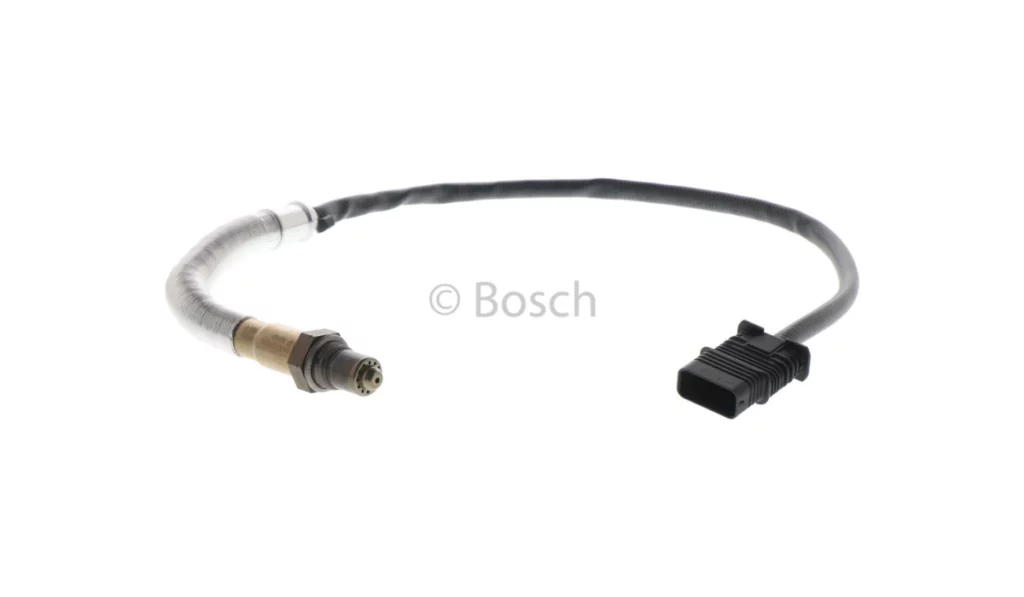
Safety Steps
Before starting the repair, make sure to follow these safety procedures:
Disconnect the Battery — Always disconnect the negative terminal of the battery to avoid any electrical shorts or accidental startups while working on the engine.
Work in a Well-Ventilated Area — Ensure you’re working in a space with good ventilation, especially if you’re working with chemicals like engine oil or gasoline.
Use Proper Protective Gear — Wear gloves to protect your hands from sharp edges and hot surfaces, and safety glasses to protect your eyes from debris.
Let the Engine Cool — Ensure the engine is completely cool before beginning work to avoid burns from hot components.
Have a Fire Extinguisher Handy: When working on or near fuel lines, there’s always a risk of fuel spills and potential ignition. Make sure you have a fire extinguisher nearby and easily accessible in case of an emergency.
These safety steps will help prevent injuries and ensure a smooth and successful repair process.
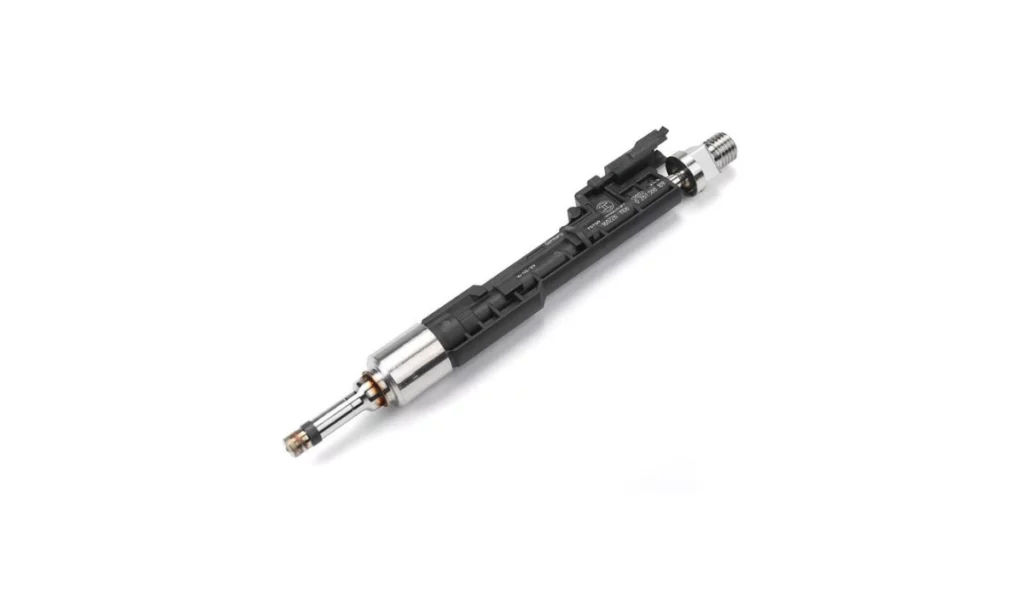
Step-By-Step Guide
The following repair instructions are specifically for the E92 335i, but the main tasks involved are similar across other BMW models that use the N55 engine. While some steps might vary slightly depending on the model, the core process of replacing the valve cover remains consistent. Be sure to consult your vehicle’s specific repair manual for any model-specific instructions.
Step 1 — Prepare the Vehicle
- Locate and Disconnect Fuel Pump Fuse — First, locate the fuse for the fuel pump and disconnect it.
- Start the Engine — Start the engine and let it run until it stalls. This step ensures that any remaining fuel in the lines is used up, reducing the risk of spills.
- Remove Battery Negative Terminal — Disconnect the negative terminal of the battery to prevent electrical shorts or accidental starts during the repair.
Step 2 — Remove Components for Access
- Remove Intake Silencer Housing — Begin by removing the intake silencer housing to gain access to the engine components.
- Remove Engine Cover — Take off the engine cover to expose the valve cover and other parts that need to be removed.
- Remove Intake Plenum — Carefully remove the intake plenum to clear more space for the valve cover removal. Be aware that the Mass Air Flow (MAF) sensor is attached to it so disconnect it before removal.
- Remove Lower Intake Pipe (Clean Air Pipe) — Remove the lower intake pipe, also known as the clean air pipe, to gain access to other components.
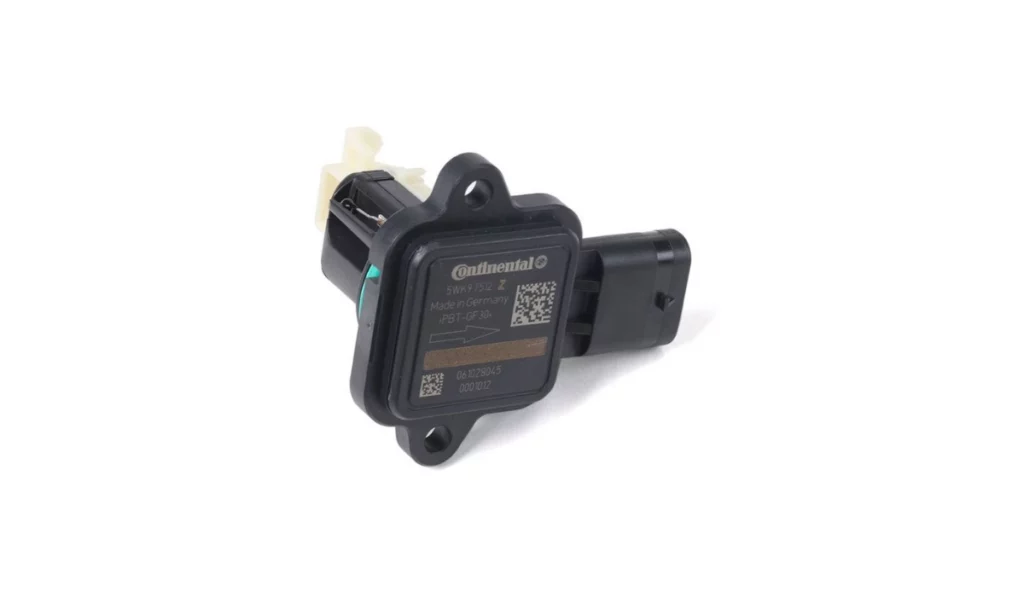
Step 3 — Disconnect Electrical and Vacuum Connections
- Disconnect Fuel Injectors and Ignition Coils — Disconnect the connectors for the fuel injectors and ignition coils. Remove the harness’s mounting bolt and set the harness aside carefully.
- Disconnect O2 Sensor, Wastegate Actuator, and Valvetronic Connector — Unplug the connectors for the O2 sensor, wastegate actuator, and Valvetronic system.
- Remove Seal for Valvetronic Actuator — Remove the seal around the Valvetronic actuator.
- Disconnect Vacuum Lines — Disconnect the vacuum line for the wastegate actuator and the PCV line attached to the valve cover.
Step 4 — Free Up Wiring and Fuel Lines
- Unscrew Bolt for Jump-Start Point — Unscrew the bolt securing the jump-start point and loosen up the wiring harness for easier access.
- Undo High-Pressure Fuel Pipes — Carefully undo the high-pressure fuel pipes, ensuring not to damage them during removal. Catch any fuel spills with shop towels or rags.
Step 5 — Remove the Valve Cover
- Unscrew Valve Cover Mounting Bolts — Begin by unscrewing all the mounting bolts holding the valve cover in place.
- Carefully Remove the Valve Cover — Gently pull out the valve cover. If you plan to reuse it, handle it with care to avoid causing any cracks or damage. However, it’s recommended to replace the valve cover, including its gasket, due to the possibility of microscopic cracks that are not visible to the naked eye.
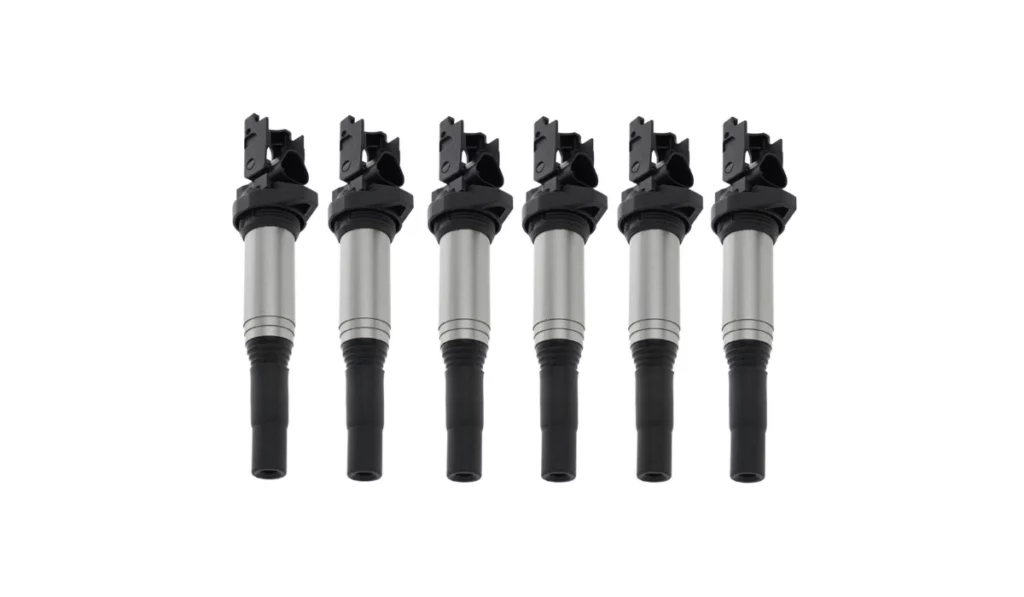
Step 6 — Install the New Valve Cover
- Install New Gasket — If you are reusing the old valve cover, install a new gasket onto it, ensuring it fits properly.
- Carefully Install the Valve Cover — Position the valve cover over the engine, making sure that the gasket stays in place and the lower part of the PCV valve (plastic lower tip) is not damaged during installation.
Step 7 — Reassemble Components
- Reverse the Removal Process — Reinstall all components in the reverse order of removal. Ensure that all connections are secure and properly seated.
- Replace Seals, Gaskets, and Aluminum Screws — Be sure to replace any seals, gaskets, and aluminum screws that were removed during the disassembly process.
Final Checks
- Tighten Bolts to Specified Torque — Ensure that all bolts are tightened to the correct specifications:
- Valve cover to cylinder head — 6 ft. lb. (8 Nm)
- High-pressure fuel pipe — 17 ± 2 ft. lb. (23 ± 3 Nm)
- Reconnect Battery — Reconnect the negative terminal of the battery once all components are reassembled.
- Test the Engine — Start the engine and check for leaks or unusual noises. Make sure everything is functioning as it should before taking the vehicle for a test drive.
How urgent is a valve cover leak?
A valve cover leak should be addressed as soon as possible. While it may start as a minor issue, ignoring it can lead to more significant problems, such as oil loss, resulting in engine overheating and potential internal damage.
Additionally, oil leaking onto hot engine components increases the fire risk. The urgency depends on the severity of the leak. Still, even a small leak should be repaired promptly to avoid costly repairs and to ensure the continued performance and safety of your BMW N55 engine.
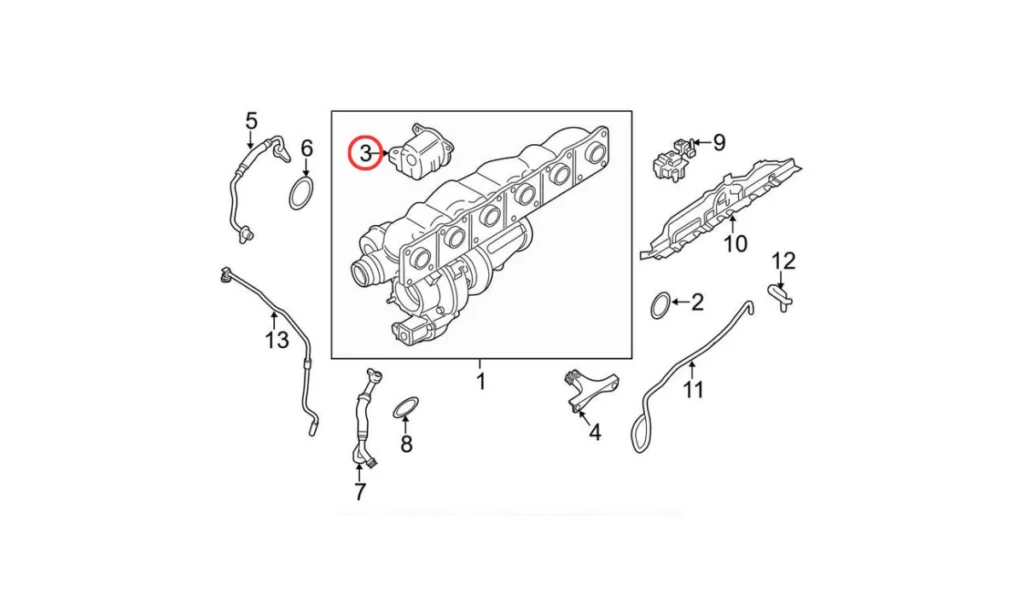
Maintenance Tips to Prevent Valve Cover Issues on N55 Engine
Preventing valve cover issues on your BMW N55 engine is much easier than dealing with the aftermath of a leak. By following some straightforward maintenance practices, you can keep your engine running smoothly and avoid costly repairs. In this section, we’ll share practical tips that will help you maintain your valve cover and ensure the longevity of your engine.
Regular Inspections
One of the simplest yet most effective ways to prevent valve cover issues is through routine visual inspections. Make it a habit to check the valve cover area for any signs of oil leaks, such as oil pooling around the spark plug wells or on the cylinder head. Early detection of a small leak can save you from more significant problems down the road. If you spot anything unusual, address it immediately to prevent further damage.
Oil Changes
Regular oil changes are crucial for maintaining the health of your N55 engine, and they play a significant role in preventing valve cover issues. High-quality oil filters and approved engine oils ensure your engine remains well-lubricated and clean, reducing the stress on the valve cover gasket. Stick to the manufacturer’s recommended oil change intervals and consider more frequent changes if you drive under harsh conditions.
Choose High-Quality Parts
Choosing between aftermarket and OEM (Original Equipment Manufacturer) parts is an important decision for every DIYer. OEM parts are designed specifically for your BMW, ensuring a perfect fit and optimal performance. While aftermarket parts might be cheaper, they can vary in quality and may not fit as precisely, potentially leading to further issues. It’s often best to stick with OEM parts for a reliable, long-lasting repair.
By incorporating these maintenance tips into your routine, you can significantly reduce the likelihood of experiencing valve cover issues with your N55 engine, ensuring it continues to deliver the performance and reliability BMW is known for.
Get Your High-Quality BMW Parts from Bimmers.com
Using high-quality parts to maintain and repair your BMW N55 engine is essential to ensuring longevity and optimal performance. At Bimmers.com, we understand the importance of keeping your vehicle in top shape, so we offer a comprehensive selection of OEM and top-rated aftermarket parts specifically designed for your BMW.
Whether you’re dealing with a valve cover leak, a failing PCV system, or any other engine issue, Bimmers.com has you covered. Our extensive catalog includes everything you need to get the job done right the first time, from valve covers and gaskets to the tools and accessories required for a successful repair. Plus, with our user-friendly website and expert customer support, finding the right parts for your BMW has never been easier.
Don’t settle for anything less than the best for your vehicle. Trust Bimmers.com for reliable parts, fast shipping, and unbeatable customer service. Visit us today to shop for all your BMW maintenance and repair needs and keep your N55 engine running like new!

